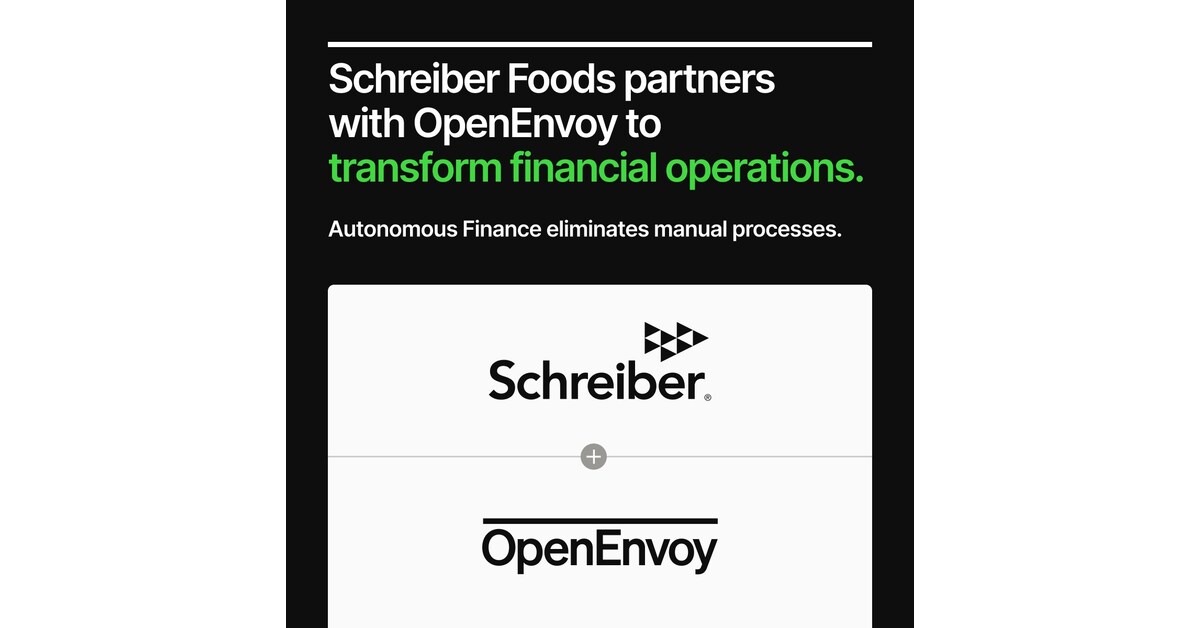- ‘How Is D-Wave Quantum By The Way, How Is That Going To Quantum?’
- Global air finance summit to take stock of jet shortages, trade risks
- Housing contract activity, thanks to more inventory, rises for fourth straight month
- Reliance, Rosneft Forge $13b Energy Alliance
- Chinese money fuels hiring spree among private banks in Hong Kong
Overview
Manufactured housing—the modern version of a mobile home—is an important, but underused, form of low-cost housing.1 Today, about 18 million people live in these homes, and most own rather than rent.2
When borrowing to buy a manufactured home, buyers usually use financing from traditional lenders such as banks or credit unions in the form of mortgages, which finance the house and land together, or home-only loans—also known as chattel or personal property loans—which finance only the house and not the land beneath. However, many manufactured home borrowers struggle to access these types of loans. Nationwide, lenders deny about half of mortgage and home-only loan applications (roughly 40% and 64%, respectively) for manufactured home purchases.3
Buyers who are unable to secure a mortgage or home-only loan from a traditional lender often turn to certain risky types of alternative financing made between the seller and buyer of the home. Examples include lease-purchase arrangements, contracts for deed, or seller financing contracts, and in this study, these are collectively referred to as “contract financing.”4 Because contract financing is agreed to privately between the parties, it can be used for a house alone or for land and a house together, but unlike traditional loans, in contract arrangements, the title to the property— and with it, legal ownership—typically does not transfer to the buyer at the start. Instead, in the case of contract financing, the seller retains legal ownership until the buyer makes the final payment.
However, little is known about the prevalence of contract financing for manufactured homes, primarily because the strength and provisions of laws governing these arrangements vary substantially across states and because of the absence of systematic national data collection. To help address this evidence gap, The Pew Charitable Trusts conducted a nationally representative survey of 1,252 adults who live in a manufactured home as their primary residence. (See the external appendix for the full survey methodology.) The survey’s key findings related to contract financing are:
- 20% of manufactured home borrowers are using some form of contract financing to buy their house, totaling more than half a million Americans.
- Contract financing is even more prevalent among borrowers whose homes are titled (i.e., legally identified) as personal property (28%) rather than as real estate (12%).
- By comparison, only 5% of borrowers who bought site-built homes—those constructed in place rather than in a factory—use contract financing.
- About three-quarters of current manufactured home borrowers own their land as well as their home. These borrowers might have been eligible for a mortgage, yet one-third of this group titled their home as personal property rather than real estate, rendering them ineligible for mortgages.
- 89% of manufactured home borrowers report being current on their loans. These borrowers have a low delinquency rate (4% report being three months or more behind).
Manufactured home borrowers’ widespread landownership and relatively low credit risk offer state and federal policymakers several opportunities to improve these buyers’ access to safer, more affordable financing options. For instance, some borrowers are shut out of mortgages because of state laws rather than the quality of their home or their credit readiness, meaning targeted legislative action could expand access to traditional lending. In addition, several federal loan programs are well-positioned to expand the home-only loan market for manufactured housing by modernizing policies to enable greater lender participation. In addition, policymakers at all levels of government can look for ways to bolster consumer protections for contract borrowers broadly and those who purchase manufactured homes specifically.
Titling challenges lead to use of alternative financing
Manufactured home borrowers use financing in vastly different ways compared with borrowers who buy site-built homes. Pew’s survey shows that this is largely driven by how a property is titled—whether as personal property or real estate.
Personal property titling covers only the home—not the land beneath it and, like a car loan, is usually recorded at a state’s Department of Motor Vehicles.5 This type of title is never used for site-built homes, but every state except New Hampshire automatically titles manufactured homes this way, even though most manufactured home owners own their land, either privately or within a resident-owned community. Those who do not own their land typically rent it in a manufactured home park or live on a Tribal reservation or on a family member’s land. Five states—Illinois, Missouri, North Carolina, North Dakota, and Oregon—allow owners who do not own the land beneath their houses to title their homes as real estate, but doing so usually requires that the home be installed on a permanent foundation or that the homeowner hold a lease for the land that spans at least 20 years.6 How often homeowners in these states meet these criteria or change their titles to real estate is unclear. But regardless of the land scenario, homes titled as personal property are not eligible for a mortgage.7
On the other hand, real estate titling includes the home and land and so is eligible for mortgages.8 Site-built homes are always automatically titled as real estate, but to title a manufactured home and land together as real estate, a buyer must meet certain criteria set by the state and take steps to retire or convert the title from personal property.
In Pew’s survey, 76% of current manufactured home borrowers said they own their home and land (usually on private land). These borrowers, therefore, could be eligible for mortgages if their property was titled as real estate, but 25% of them still title their manufactured home as personal property rather than real estate. The remaining 24% own their homes but not land, and almost always must title their manufactured home as personal property. In total, then, only about half of all manufactured home borrowers title their homes as real estate. (See Figure 1.)
Borrowers’ land ownership status and titling arrangements greatly affect their ability to obtain safe, affordable financing. For the half of manufactured home buyers whose homes are titled as personal property, a home-only loan is often the next-best option. However, access to this type of financing is limited: 64% of home-only loan applications were denied in 2021.9 Without either mortgage or home-only loans, the only remaining option (other than purchasing with cash) is contract financing.
You are viewing: 1 in 5 Manufactured Home Borrowers Use Risky Contract Financing
As a result, among manufactured home owners, 88% of those who title their homes as real estate use a mortgage and 12% use some form of contract financing, while 72% of owners who title as personal property use home-only loans and 28% use contract financing. (See Figure 2.)
Demographically, borrowers who own their manufactured homes as personal property versus real estate are fairly similar. However, Pew’s survey showed three statistically significant differences. First, borrowers whose homes are titled as personal property are more likely than those whose homes are titled as real estate to be Black (6% compared with 2%) or Indigenous (9% compared with 1%) and less likely to be White (77% compared with 94%). Second, borrowers with homes titled as personal property are also less likely that those with real estate titles to live in nonmetropolitan areas (26% compared with 41%). The third difference, income, is more challenging to characterize. More borrowers who have homes titled as personal property reported incomes below $10,000 (10%) or over $150,000 (10%) than did borrowers whose homes are titled as real estate (1% and 4%, respectively).
The importance of land ownership and title is even more evident when comparing borrowers by the type of housing they purchase. Manufactured home buyers were nearly four times as likely as sitebuilt buyers to use contract financing. (See Figure 3.) Among manufactured home borrowers, 44% had a mortgage, 35% had a home-only loan, and 20%—about 560,000 borrowers—used contract financing.10 In contrast, 95% of site-built home borrowers had a mortgage and 5% had some form of contract financing.
Most manufactured home borrowers are current on their loan payments
Research about the repayment patterns of home-only loan borrowers is scarce, so policymakers, analysts, and lenders often raise concerns about these borrowers’ likelihood of falling behind or defaulting on their loans. However, 89% of borrowers in Pew’s survey reported being current on their monthly payments, and Pew’s data showed no significant differences in delinquency and default rates by loan type, land ownership status, or how a home is titled.
Further, 11% of all survey respondents said they were not current on their payments. Of those, nearly two-thirds said they were behind by less than three months, and just 4% of all respondents reported being three or more months behind. (See Figure 4.)
Research from the Federal Housing Administration (FHA) shows that whether manufactured home borrowers own, rent, or live for free on their land can play an important role in their default rates. FHA’s analysis found no significant difference in default rates between mortgage and home-only borrowers who own their land. But it also found that, among home-only borrowers, those who rented land were more likely to default than those who owned their land.11 The research specifically noted that default risk was highest for borrowers on rented land in manufactured home communities.12 Renting land can contribute to housing and financial instability among manufactured home owners. For instance, in Pew’s survey, 69% of homeowners on rented land reported either not having a lease for their land or not knowing whether they had one, indicating widespread vulnerability to unexpected rent increases or eviction.13 Such sudden cost changes or displacement can lead to delinquency and default.
Contract financing has few consumer protections
Mortgages, home-only loans, and contract financing differ in their levels of consumer protection. Mortgages are the gold standard in home financing with the strongest protections, lowest interest rates, and long repayment terms (usually 30 years). Among the consumer protections on mortgages are those provided via the Truth in Lending Act (TILA) and the Real Estate Settlement Procedures Act (RESPA), which require lenders to provide specific disclosures and good-faith estimates of closing costs, prohibit affiliations between selling and financing businesses, and forbid the steering of buyers to specific title insurance companies or products that will benefit lenders.14
Home-only loans, in contrast, tend to have higher interest rates; fewer protections than mortgages, especially for borrowers who fall behind on payments; and less restrictive rules regarding seller-lender affiliations and steering. Additionally, despite the prevalence of this type of financing for manufactured homes, federal programs for home financing generally only include mortgages and do not insure or guarantee home-only loans or purchase active home-only loans from third-party lenders on the secondary financing market—a common practice for mortgages. In the absence of federal backing, the home-only market has few lenders and extremely high denial rates.15
See more : Victims of Bernie Madoff Ponzi scheme receive final payouts
However, home-only loans do have some federal and state-level protection, such as TILA and RESPA disclosure requirements for borrowing costs, annual percentage rates, amount financed, and total payments. And some home-only loan borrowers are protected by the federal “holder rule,” which allows homebuyers to make a legal claim against a seller or finance company if the home is not as advertised.16 (The holder rule does not apply to mortgages.)
Further, governments and lenders collect and publicly share detailed data about home-only loans and mortgages, such as the recording of each lien and title on a home and Home Mortgage Disclosure Act data on loan applications and originations.17 But contract financing is far less regulated with almost no data collected or made available by federal or state agencies or lenders on the prevalence, terms, or interest rates of contracts or of the homes purchased.18
One common feature of contract financing—which is prohibited for federally regulated traditional loans—creates particular risk for borrowers: the lack of legal ownership of the property from the start of the financing agreement. Contract buyers live in, but do not hold the deed to, their homes (until they make their last payment). However, they often assume most or all of the responsibilities of homeownership, such as keeping up the property, fixing or updating the home, and sometimes paying the property taxes.19 As a result, these borrowers frequently invest significant time and money in their properties even though they could be swiftly evicted without an opportunity to recoup those investments—no different than a renter.20 And in the event of a natural disaster, borrowers using contract financing are generally not eligible for federal or state homeowner assistance programs. (See Table 1.)
As of this writing, fewer than half of states have consumer protections on contract financing, and those protections are typically weaker than the safeguards on mortgages and home-only loans, may not apply when manufactured homes are titled as personal property, and depend on the type of contract used.21 In states where laws do exist and are enforced, they help to ensure certain basic consumer protections for contract borrowers, such as mandating that the contract be publicly recorded, requiring sellers to provide receipts for buyer payments, or specifying how defaults and delinquencies be resolved. However, in the absence of clear state or federal laws, these contracts may or may not be written and executed as expected, leaving these contract borrowers with few to no protections if problems arise.22
Pew conducted focus groups and interviews with legal aid professionals, which revealed other issues related to contract financing protections. For instance, many sellers use incorrect terminology when developing their contracts, such as calling an agreement lease-purchase but using the terms of a contract for deed, or vice versa. In such a case, the buyer may not be able to determine whether or which consumer protections apply to the contract.
Table 1
Contract Financing Is the Riskiest Option for Manufactured Home Borrowers
Consumer protections, data, and recording by loan type
| Federal programs that insure, guarantee, or purchase loans | FHA, USDA, VA, GSEs* | FHA | None |
|---|---|---|---|
| Federal consumer protections | All | Some of the same protections as mortgages, holder rule may also apply but does not for mortgages | None, except in the case of seller-financed mortgages for homes owned as real estate. |
| State protections | Usually most robust | Usually some but less than mortgages | Rarely, but in some states protections depend on home titling |
| Record of loan application, application outcomes, and loan repayment | Home Mortgage Disclosure Act, credit reporting | Home Mortgage Disclosure Act, credit reporting | None |
| Recording of the originated loan and home that is the collateral (lien) | Lien recorded with the county register of deeds | Lien recorded with the secretary of state and often secured by a UCC-1 statement† | Rarely; land contracts are sometimes recorded at the local level |
| Legal ownership transfers to buyer at start of financing arrangement | Yes | Yes | Not usually |
* Federal Housing Administration (FHA), United States Department of Agriculture (USDA), United States Department of Veterans Affairs (VA), and Government Sponsored Enterprises (GSEs), such as Fannie Mae and Freddie Mac.
† UCC-1 is the Uniform Commercial Code-1 statement, which is a legal notice filed by creditors that have a lien on personal property in case the borrower does not repay their loan.
Sources: Cornell Law School, UCC-1 Form, 2022. Sarah Gerecke, Laurie Goodman, and Daniel Pang, Manufactured Housing Personal Property Loans: Balancing Market Liquidity and Consumer Protection, 2023
Opportunities for policymakers to improve manufactured home financing
Many of today’s manufactured home buyers who use contract financing could be better served by home-only loans and mortgages. Although federal agencies and the secondary market have made some strides toward making these loans more available to manufactured home borrowers, other opportunities to expand these buyers’ access to credit remain untapped. States could consider changing their titling policies to make more manufactured home buyers eligible for mortgages. And at the same time, policymakers should also take steps to ensure that contract financing includes reasonable consumer protections.
Federal programs can expand mortgage and home-only loan access
Federal programs, such as those provided by FHA, USDA, Ginnie Mae, and the GSEs, already back mortgages for manufactured homes. These programs provide a crucial source of liquidity for mortgage lenders by enabling them to sell or insure their loans, which, in turn, makes it easier for credit-ready homebuyers to qualify for mortgage financing. More than 3 in 5 mortgages made in the U.S. use one of these programs.
But some borrowers have been shut out of mortgage access based on technicalities, which federal programs could help address. For instance, several states have laws that prevent manufactured home owners who live on collectively owned land, such as in resident-owned communities or on Tribal lands, from titling their homes as real estate, rendering them unable to get a mortgage. The GSEs can better serve these populations by purchasing home-only loans as they do for mortgages.
Additionally, federal home financing agencies and enterprises can leverage their existing programs to expand credit access to more manufactured home borrowers and strengthen consumer protections. To that end, FHA and Ginnie Mae updated their Title I program in February 2024 to increase the availability of home-only loans.23 However, the program’s consumer protections still need improvements to require the same loss-mitigation strategies that are standard for mortgages and to develop minimum land lease requirements, which may boost borrowers’ housing stability and reduce default risks.
Further, the Federal Housing Finance Agency and the GSEs have the option—and resounding support from myriad stakeholders—to launch new home-only lending programs to provide loan insurance and guarantees and to purchase these loans on the secondary market. The net effect of such programs could help reduce barriers to entry for new lenders, increasing access to safe and affordable financing for credit-ready homebuyers. But as of this writing, the agencies have not acted on this potential.24
Stronger consumer protections for contract finance borrowers
In addition to providing better access to mortgages or home-only loans, federal and state policymakers can act to strengthen consumer protections for borrowers using contract financing. In particular, they should ensure that contracts are publicly recorded and clarify whether contract borrowers are covered by landlord-tenant laws or homeowner laws. Laws applicable to homeowners afford significant protections and would enable contract borrowers to retain their equity. Landlord-tenant laws would treat borrowers as renters, relieving them of responsibility for home repairs and property taxes and placing those obligations on the landlord/seller until the buyer acquires the deed to the property. Finally, policymakers should make sure that existing and new statutes providing consumer protections for contract borrowers include manufactured home buyers regardless of how the home is titled.
Conclusion
Manufactured homes offer an affordable opportunity to achieve homeownership for many Americans. However, a lack of safe and affordable financing for manufactured homes presents a barrier to taking advantage of this option for many prospective buyers. As a result, borrowers purchasing manufactured homes are four times as likely as those buying site-built homes to use poorly regulated contract financing instead of mortgages or home-only loans.
But this problem is driven largely by land ownership and property titling considerations rather than the borrower’s risk profile, so targeted policy action can help provide greater protection for contract borrowers and expand the availability of safe, affordable credit for manufactured home buyers. At the federal level, recent updates to FHA’s Title I program should help make home-only loans easier for these buyers to get and reduce barriers to entry into this market for lenders. Federal and state regulators and lawmakers could also consider aligning standards for home-only loans with those for mortgages and authorizing new home-only loan financing programs. In addition, to ensure that new and enhanced protections reach all contract borrowers, state and federal lawmakers will need to include manufactured home owners in all policies designed to improve the safety of contract arrangements. Taken together, these actions could greatly improve access to safe and affordable financing for manufactured home buyers and ensure that they have the same rights and opportunities as any other homeowner.
Acknowledgments
This brief was researched and written by Pew staff members Rachel Siegel, Seva Rodnyansky, and Dennis Su. The project team thanks Jennifer V. Doctors, Tricia Olszewski, Allie Trip, Omar Antonio Martínez, Zach Bernstein, Chelsie Pennello, Sarah Spell, Krista Jenkins, Theron Guzoto, Gabriel Kravitz, Linlin Liang, Travis Plunkett, Tara Roche, and Adam Staveski for providing important communications, creative, editorial, and research support for this work. This paper benefited from the insights and expertise of external reviewers: John Van Alst, senior attorney, National Consumer Law Center, and Daniel Rezai, staff attorney, Virginia Poverty Law Center. Although they have reviewed the report, neither they nor their organizations necessarily endorse its findings or conclusions.
Endnotes
- Karan Kaul and Daniel Pang, “The Role of Manufactured Housing in Increasing the Supply of Affordable Housing,” Urban Institute; Housing Finance Policy Center, 2022, https://www.urban.org/research/publication/role-manufactured-housing-increasing-supply-affordable-housing. Fannie Mae, “Duty to Serve; Underserved Markets Plan 2022-2024,” 2021, https://www.fhfa.gov/sites/default/files/2023-05/Fannie-Mae-2022-2024-UMP-Jan2023.pdf.
- “American Community Survey, Table B25033-Total Population in Occupied Housing Units by Tenure by Units in Structure,” U.S. Census Bureau, https://data.census.gov/table/ACSDT1Y2021.B25033?q=b25033+2021. Tanya Zahalak, “Multifamily Economic and Market Commentary: Manufactured Housing Landscape 2020,” Fannie Mae, 2020, https://www.fanniemae.com/media/33581/display.
- Linlin Liang, Rachel Siegel, and Adam Staveski, “Data Shows Lack of Manufactured Home Financing Shuts Out Many Prospective Buyers,” The Pew Charitable Trusts, 2022, Kevin A. Park, “Real and Personal: The Effect of Land in Manufactured Housing Loan Default Risk,” Cityscape 24, no. 3 (2022): 339-62, https://www.huduser.gov/portal/periodicals/cityscape/vol24num3/ch14.pdf.
- The Pew Charitable Trusts, “What Has Research Shown About Alternative Home Financing in the U.S.?” 2022,
- “What You Should Know About Titling a Manufactured Home,” My Home by Freddie Mac, 2024, https://myhome.freddiemac.com/blog/homeownership/what-you-should-know-about-titling-manufactured-home.
- Fannie Mae, “Titling Requirements for Manufactured Homes,” 2020, https://www.fanniemae.com/content/guide/titling-requirements-for-manufactured-homes.pdf?_ga=2.66053485.210667105.1603362108-1717120808.1601930950.
- I’M HOME: Innovations in Manufactured Homes, “Manufactured Housing Resource Guide: Titling Homes as Real Property,” National Consumer Law Center, 2014, https://www.nclc.org/images/pdf/manufactured_housing/cfed-titling-homes.pdf.
- “What You Should Know About Titling a Manufactured Home,” My Home by Freddie Mac.
- Linlin Liang, Rachel Siegel, and Adam Staveski, “Data Shows Lack of Manufactured Home Financing Shuts Out Many.”
- Pew’s 2022 manufactured home survey found that contract financing borrowers make up 8.12% of manufactured home owners, and the 2022 Current Population Survey Annual Social and Economic Supplement shows that 6,894,936 persons 18 years or older lived in owner-occupied manufactured housing. Calculating 8.12% of 6,894,936 yields an estimated total of 559,869 U.S. adults using contract financing for manufactured homes.
- Kevin A. Park, “Real and Personal: The Effect of Land in Manufactured Housing Loan Default Risk.”
- Kevin A. Park, “Real and Personal: The Effect of Land in Manufactured Housing Loan Default Risk.”
- Cameron Rifkin and Maddie Davis, “How Manufactured Homes Can Build Housing Stability,” 2022, https://www.ncsl.org/state-legislatures-news/details/how-manufactured-homes-can-build-housing-stability. Ahmad Abu-Khalaf, Flora Arabo, and Steven Swann, “Preserving the Affordability of Manufactured Homes in Land-Lease Communities,” Enterprise Community Partners, https://www.enterprisecommunity.org/sites/default/files/2021-12/Enterprise%20Policy%20Brief%20on%20Preserving%20the%20Affordability%20of%20Manufactured%20Homes%20in%20Land-Lease%20Communities%202021.pdf.
- Sarah Gerecke, Laurie Goodman, and Daniel Pang, “Manufactured Housing Personal Property Loans: Balancing Market Liquidity and Consumer Protection,” Urban Institute, 2023, 3, 4, https://www.urban.org/sites/default/files/2023-08/Manufactured%20Housing%20Personal%20Property%20Loans.pdf. I’M HOME: Innovations in Manufactured Homes, “Manufactured Housing Resource Guide.” Federal Mortgage Disclosure Requirements Under the Truth in Lending Act (Regulation Z), 12 CFR Part 1026, Consumer Financial Protection Bureau, 2018, https://www.federalregister.gov/documents/2018/05/02/2018-09243/federal-mortgage-disclosure-requirements-under-the-truth-in-lending-act-regulation-z.
- “Federal Agencies Can Improve Access to Credit for Manufactured Home Buyers,” Rachel Siegel, The Pew Charitable Trusts, Linlin Liang, Rachel Siegel, and Adam Staveski, “Data Shows Lack of Manufactured Home Financing Shuts Out Many.”
- Part 433—Preservation of Consumers’ Claims and Defenses, 16 CFR Part 433, Federal Trade Commission, 1975, https://www.ecfr.gov/current/title-16/part-433.
- Jessica Russell et al., “Manufactured Housing Finance: New Insights From the Home Mortgage Disclosure Act Data,” Consumer Financial Protection Bureau, 2021, 3, https://www.consumerfinance.gov/documents/9806/cfpb_manufactured-housing-finance-new-insights-hmda_report_2021-05.pdf.
- The Pew Charitable Trusts, “Millions of Americans Have Used Risky Financing Arrangements to Buy Homes,” 2022, 4,
- The Pew Charitable Trusts, “Millions of Americans Have Used Risky Financing.”
- National Consumer Law Center, “Policy Recommendations: Ways to Prevent Built-to-Fail Land Contracts and Lease-Options From Hijacking the American Dream of Homeownership,” 2024, 1-3, https://www.nclc.org/wp-content/uploads/2024/08/policy-brief-land-contracts-aug2024.pdf.
- Pew commissioned the National Consumer Law Center to analyze state laws, statutes, and major legal decisions governing alternative financing for home purchases. The study found that 21 states had some type of consumer protections for contract financing.
- The Pew Charitable Trusts, “Millions of Americans Have Used Risky Financing.”
- “Regulatory Changes Expected to Increase Access to Financing for Manufactured Homes,” Tara Roche and Rachel Siegel, The Pew Charitable Trusts, 2024,
- Federal Housing Finance Agency, “2024 Duty to Serve Public Listening Sessions: Manufactured Housing Market,” accessed Aug. 7, 2024, https://www.fhfa.gov/news/videos/2024-duty-to-serve-listening-session-manufactured-housing.
Source link https://www.pewtrusts.org/en/research-and-analysis/issue-briefs/2025/01/1-in-5-manufactured-home-borrowers-use-risky-contract-financing
Source: https://summacumlaude.site
Category: News







